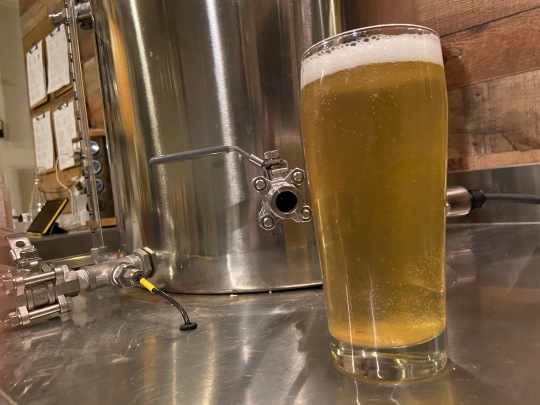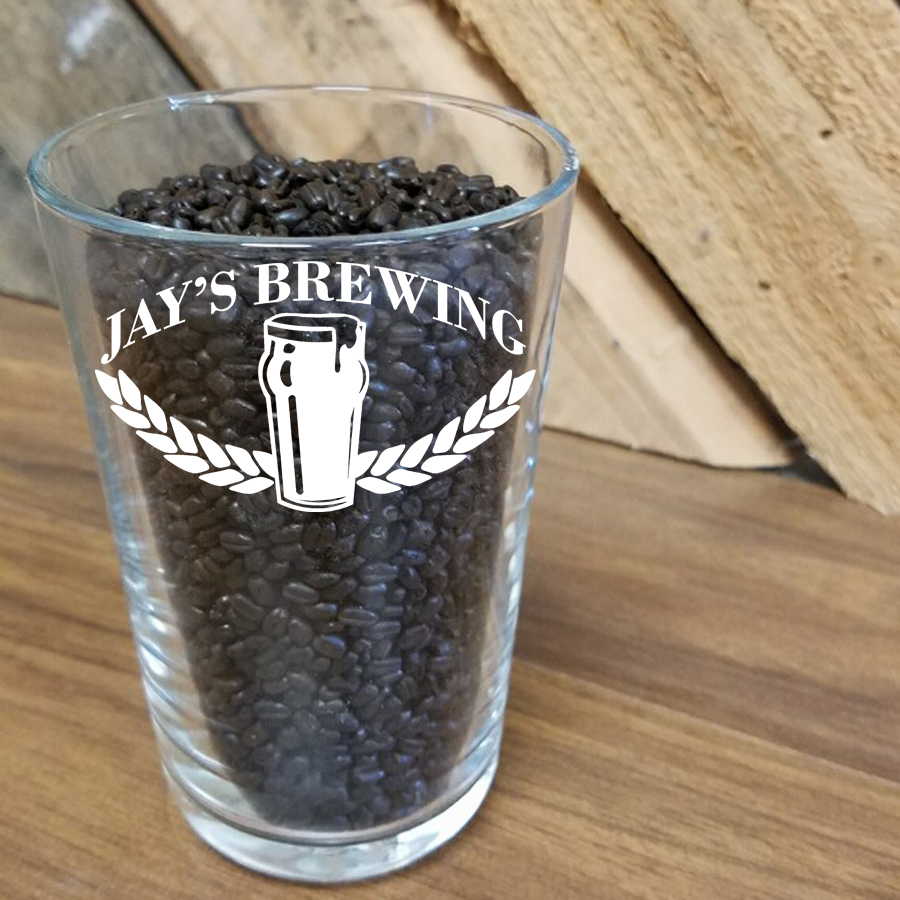Hmm.. *cough* whew.. it’s dusty in here. Sorry about that. The busy time of year always seems to catch me least prepared. Holidays, school, work. Still, that’s no excuse. The people demand beer content and beer content is what the people should get!
So, with that being said, I am back and I’m going to turn it to 11. This will be the first of 4 new posts and recipes that I’ll be posting over the next few weeks.
Given the time of year, this is a great opportunity for us to discuss lager fermentation. Unless you have temperature control or the ability to ferment under pressure, you’re going to find it difficult to get a lager yeast to perform the way you want it to.
During the winter, you can usually find a way to do this in your garage. My garage this time of year often finds itself near 50°F, sometimes even into the 40’s. If you find yourself in the same position, then make lager I say! Chill your beer as cold as you can get it with traditional means, then let it sit in the garage overnight. If it’s 53°F in there, your beer will eventually equalize. Then pitch your yeast. You may have some temperature variance, but it’s better than fermenting it in the dog days of summer without a way to cool it down.
You have a few options:
-
- Let it roll. 48° – 60° seems ok with you and you just want to make a beer, then let it roll. Put that bucket out in the garage and let it do its thing.
- Use method one, but buy a fermentation belt and an Inkbird ITC-308 and for $50, you can maintain the same temp (unfortunately, this only works with keeping the temp up to your max, not with cooling it down).
- Buy a used refrigerator off craigslist and hook it up to an Inkbird ITC-308. This will provide you the ability to pinpoint a temp and keep it within a few degrees, up or down.
- Pick up a Fermentasaurus from Jay’s Brewing and ferment your lagers at ale temperatures with no need for a diacetyl rest.
This beer here, is a beautifully clean American Light Lager that was brewed just 14 days ago, and for only being in the keg for 5 days, it’s pretty clear too (forgive the condensation on the glass). I was able to skip the 1-2 week fermentation period, the 1-2 week period of slowly raising my temperature for a D-Rest and holding, then slowly bringing it back down to lager temps and also the resulting 4-6 week period lager period.

Now, if spending $200 on a used fridge, an Inkbird and a new fermenter isn’t your style, I get that. It’s a tough pill to swallow just to make a new style. However, you could just as easily do option #1 or #2 for between $0-50!
I’m going to give you a recipe for an American Lager and I’m going to offer 2 different ways you can ferment it. You chose!
‘Merica – American Lager
OG: 1.045
FG: 1.006
ABV: 5.0%
IBU: 12.7
SRM: 2.8
Batch Size: 5.5 Gallons
*Numbers adjusted for Beersmith calculationsMash:
Single Temp. Infusion – 148°F for 75 min.
Mash pH (adjusted using Lactic Acid): 5.4Grain Bill
7 lb. – 2-Row (77.8%)
2 lb. – Flaked Rice (22.2%)Hops
.75 oz – Hallertau (4.5% AA) @ 60 min.Yeast
WLP840 American Lager YeastWater Chemistry
Calcium: 18 ppm
Sodium: 20 ppm
Magnesium: 10.8 ppm
Sulfate: 32.8 ppm
Chloride: 28 ppm
Bicarbonate: 58 ppm
Sulfate/Chloride: 1.2 (Balanced)Fermentation Schedule
Fermentation Option 1: Maintain ambient winter garage temps and some form of heating belt or pad to maintain a temperature of approximately 50-55°F, ferment for approximately 6-7 days. By adjusting the temperature of your heating device (if it has a control or by allowing it to cycle longer using an Inkbird temperature controller), slowly raise the temperature by 5°F each day until you have reached 70°F. Hold this temp for 3-5 days. Slow lower the temperature back closer to your garages ambient temperature range until you can go no colder. Keg or bottle and allow to lager in the mid 30’s for 4-6 weeks. If bottling, I recommend you keep the bottles also garage temp to allow it to carbonate. After a couple of weeks, you can put them in the fridge to lager.Fermentation Option 2: Pressure ferment using a Fermentasaurus at approximately 68°F for a period of 7-10 days at 11-14 PSI. Bottle or keg after primary fermentation is complete. Lager in the mid 30’s. Don’t have a fermentasaurus and still want to do this? Get a ball lock spunding valve from Jay’s Brewing and ferment in a corny keg!
Until next time, happy brewing!
Stephen Boyajian has been an avid homebrewer for 4 years. A fan of many styles, with a particular love for IPA’s and Stouts. He lives in Gainesville, VA with his wife, 3 kids and dog. When not brewing, he enjoys playing golf or playing guitar.


January 12, 2020 at 11:00 am
I use a Coleman cooler to put fermenter in and use freezer ice pack or you can use frozen water bottles as needed, with a $10 reptile thermometer fed in through drain hole. It is not precise but you can make lagers that way. I make only 2 gal at once so the fermenter fits easily.